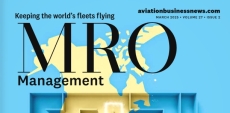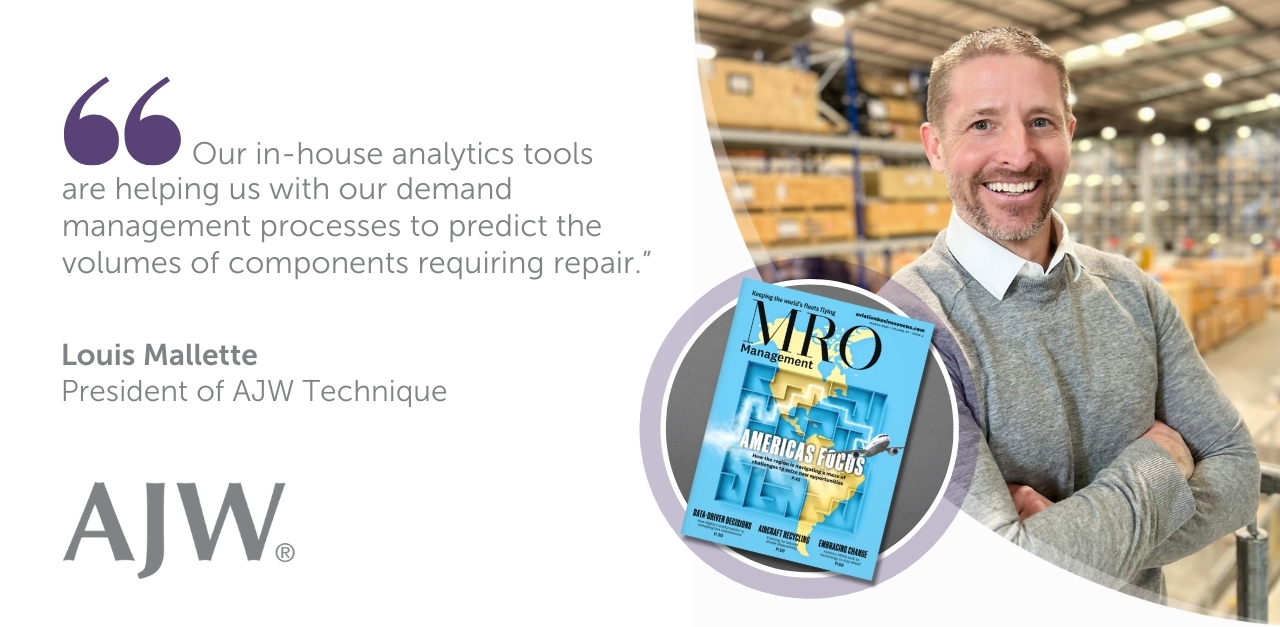

24/7 AOG Critical Response
Hotline![]() UK +44 1403 798888US +1 877 780 2008
UK +44 1403 798888US +1 877 780 2008
Our award winning global AOG service is manned 24 hours a day, 365 days a year.
Please call +44 1403 798888 or email aog@ajw-group.com.

2 Apr 2025

OEMs select their avionics partners carefully, looking for facilities that maximise the service lifespan of each system, while enhancing performance levels, and reducing AOG delays. How are avionics MROs matching the demand for exceptional service in this competitive landscape? MRO Management Magazine investigates.
Reporting for MRO Management Magazine, Kevin Rozario speaks to avionics MROs to find out what OEMs are looking for in avionics MRO partners, and how maintenance facilities are staying ahead in a busy market.
Talking to Louis Mallette, President at AJW Technique, Rozario asks how Technique is maintaining high-level MRO capabilities across the board.
“Having expert technical staff is pivotal,” says Mallette. “We employ highly trained technicians with specialised certifications to ensure repairs are precise and effective. It is equally important to implement strict quality control, where processes align with industry standards to guarantee that all work meets performance requirements.”
How are MROs embracing technical advancements? At AJW Technique, in-house advanced testing equipment and state-of-the-art diagnostic tools allow for accurate issue identification and comprehensive repairs, says Mallette.
The AJW Technique President goes on to share that the company has a range of automated test equipment (ATE) including several ATEC-6 units, a global benchmark in avionic test equipment.
Next, Rozario asks about the details of working at component level. “Looking at the minutiae of systems and how they connect is important”, replies Mallette. “Comprehensive testing and troubleshooting procedures are essential to maintaining a high-level MRO capability, as is the ability to perform Level 3 repairs at a circuit card level,” he adds.

What challenges do older aircraft pose in component repair?
“As components age... this leads to stress on the circuit cards and an increased prevalence of cold solder joints for example, in addition to components such as capacitors, switches and displays failing due to age.” Troubleshooting these failures is complex and relies on the knowledge of experienced technicians, says Mallette.
“Component obsolescence is another common problem in older Avionics components,” he adds. “AJW work with OEMs to identify replacements for parts that are no longer procurable, in addition to the extensive use of used serviceable material supported by our aircraft teardown programs.”
Rozario observes that digital tools have become increasingly important in avionics MRO diagnostics and testing. With ATE coming to the fore in recent years, what’s next for MROs?
AJW is proactively reinforcing its operational improvements by focusing on digital innovation. Technologies like AI and predictive maintenance and analytics help to optimise inventory and enhance responsiveness, says the AJW Technique President.
He continues, stating that “the use of predictive maintenance and analytical tools is helping us with our demand management processes to predict expected volumes of components requiring repair.”
Mallette finishes by revealing that AJW Technique is piloting the use of AI tools to assist with the knowledge transfer to a new generation of technicians and to speed up the process of report writing and parts selection for experienced technicians.
Rozario concludes that avionics MROs are embracing rapidly advancing technology and investing in the skills of their maintenance facility workforces to ensure they maximise operational efficiency.